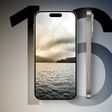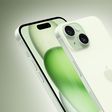Apple Pay has overtaken the Starbucks mobile app to become the most popular mobile payment system in the United States, claims a new report out today.

According to eMarketer, Apple Pay became the market leader last year, when 27.7 million Americans used the app to make a purchase. Since then, however, Apple Pay has grown even faster than expected.
In 2019, Apple Pay will have 30.3 million users, or 47.3 percent of mobile payment users. That compares with Starbucks' 25.2 million customers via its mobile app in the same year, representing 39.4 percent of mobile payment users.
"Apple Pay has benefited from the spread of new point-of-sale (POS) systems that work with the NFC signals Apple Pay runs on," said eMarketer principal analyst Yory Wurmser. "The same trend should also help Google Pay and Samsung Pay, but they will continue to split the Android market."
Citing data from Digital Trends, the analysis predicts Apple Pay will be available in 70 percent of U.S. retailers by the end of 2019. In contrast, the Starbucks app has commanded a 40 percent market share of mobile payments for the last few years, but growth potential is limited because it can only be used in Starbucks stores.
Total spending via contactless mobile payments will approach $100 billion this year in the U.S., according to eMarketer. On average, that is equivalent to a user spending $1,545 per year, up more than 24 percent over last year.
Nearly 64 million people (30 percent of all U.S. smartphone users) are expected to make use of mobile payments this year, a 9.1 percent increase over 2018. In terms of demographics, nearly 50 percent of all smartphone users are adults aged 25 to 34, so the growth of mobile payments is expected to be strongest in this age group, although digital wallet use is said to be growing across the board.
"Although a growing number of millennials feel secure using payment apps, virtually all still find credit and debit cards equally convenient," said eMarketer forecasting analyst Vincent Yip. That bodes well for Apple Card, which launched earlier this year. Apple Pay is now in 47 markets and in the June quarter, started adding more new users than PayPal, with monthly transaction volume growing four times as fast.






















Top Rated Comments
If I understand this right, only slightly more people use Apple Pay, which is a way of using almost any credit card for any purchase at any location, than use the Starbucks mobile order app at Starbucks cafes.
That means out of the virtually endless places you could use Apple Pay, about the same number use the Starbucks mobile app to pay at a single store.
I don't see that as a winning statistic.
I don't think they're referring to Apple Card but to Apple Pay which you can use with virtually any payment method like a debit card or Apple's own Apple Cash.
Starbucks allegedly is used by 39.4% of mobile payment users, so ApplePay is decently ahead of them. Again, consider that Starbucks mobile pay can be used on any smartphone.
Being the number 1 mobile payment solution *and* Having an almost 10% lead over the second-place solution while also only being limited to around 22% of the smartphone market share is pretty impressive.
More info here: https://www.zdnet.com/article/emv-understanding-why-the-us-migration-didnt-happen-sooner/
Then there's also the scale of what needs to be done. Card by card, store by store. There's 330 million Visa cards in the US... 771 million in the rest of the world combined. Mastercard is 231 vs 644. AmEx is 54 vs 60. That's nearly 50% of the whole pie that needs to be replaced... for a second time. And as of calendar close 2018, we were 50% done. Fueling the slow pace this time around is that as soon as its adopted, fraud responsibility falls on the merchant. Previously, someone uses a fake card, merchant gets paid the full amount; the credit card issuer eats the loss. Not anymore.
Anyway... Visa and Mastercard has mandating that all terminals must support contactless -- for example, 1 January 2020 the entire EU must support it or they'll charge merchants larger fees for using outdated terminals. In the US it'll be by market segment.
In relation to WeChat. Real-Time Payments are now a thing here. Banks are rolling it out now, first to corporates.